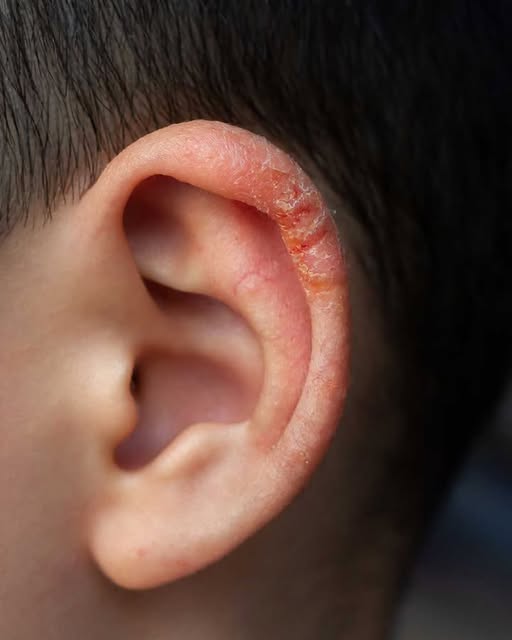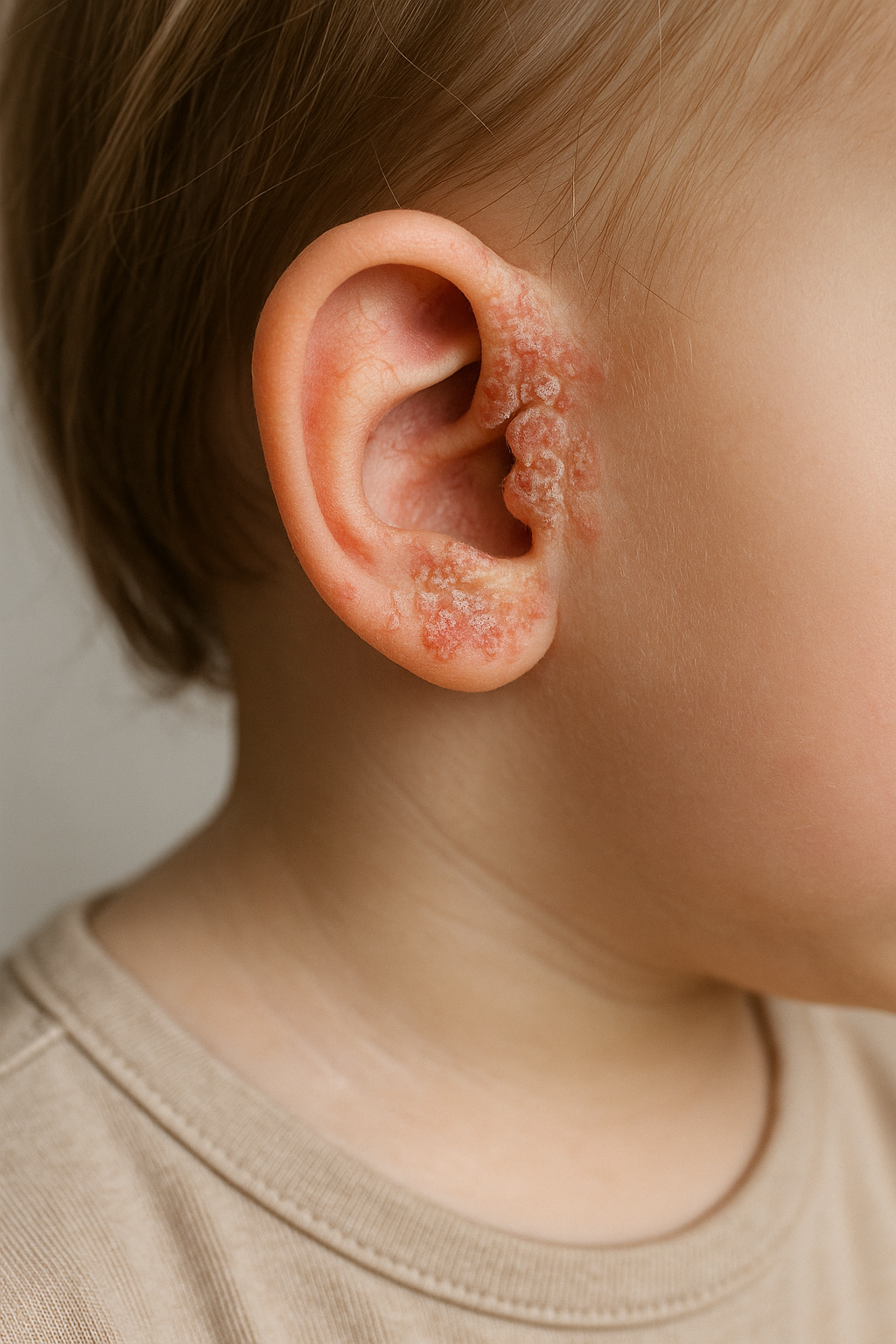Discovering an unusual patch or rash on your child’s ear can be worrying — especially when your doctor’s appointment isn’t for another week. It’s natural for parents to wonder what’s causing it, whether it’s painful or contagious, and if immediate treatment is necessary.
One of the most common explanations is atopic dermatitis, often referred to as eczema. This chronic skin condition leads to inflammation, itching, and dryness. Because the ears are regularly exposed to the environment and come into contact with various irritants (like soaps, hair products, or even clothing), they’re a common area for flare-ups.

What You Might Notice
- Keep an eye out for the following signs and symptoms:
- Redness, swelling, or dry flaky skin
- Thickened or rough patches that may feel scaly to the touch
- Small bumps or blisters that sometimes ooze or crust over
- Persistent itching — but try to discourage scratching, as it can lead to infection
What You Can Do at Home Right Away
While waiting to see your doctor, a few simple steps can help keep the area clean and comfortable:
- Gently cleanse the ear area with mild, fragrance-free cleansers, then pat dry
- Apply a cool compress to calm itching and reduce inflammation
- Discourage scratching or rubbing — consider keeping your child’s nails short
- Keep hair products, earrings, or headphones away from the irritated skin
Helpful Over-the-Counter & Natural Remedies
Certain mild treatments can relieve discomfort and prevent worsening:
- Hydrocortisone cream (use sparingly and exactly as directed on the label)
- Moisturizers or emollient creams to lock in hydration and soothe the skin
- Natural options like coconut oil or aloe vera — always test a small area first to rule out sensitivity
When to Seek Immediate Medical Help
Contact your healthcare provider right away if you notice any of these warning signs:
- Increasing redness, swelling, or warmth around the area
- Yellow crusts, pus, or drainage, which could signal infection
- Fever, irritability, or worsening pain
- A rapidly spreading rash beyond the ear
Preparing for Your Doctor’s Appointment
To make the most of your visit and help your doctor determine the cause quickly:
- Keep a record of when the symptoms began and how they have changed
- Note any treatments you’ve tried (including creams or home remedies) and whether they helped
- Take photos of the rash to show its progression
- Be prepared to discuss your child’s medical history, allergies, skincare habits, and any past issues with eczema or rashes

Tips for Preventing Future Flare-Ups
Once the skin heals, maintaining a healthy routine can help prevent the problem from returning:
- Avoid harsh soaps, detergents, or fragrances that dry or irritate the skin
- Keep a daily moisturizing routine using gentle, child-safe products
- Dress your child in soft, breathable fabrics like cotton to minimize irritation
- Maintain moderate room humidity and avoid extreme heat or cold
- Trim fingernails regularly to reduce the risk of scratching
The Bottom Line
While it’s normal to feel anxious when your child’s skin changes unexpectedly, most ear rashes and patches — including eczema — are manageable with proper care. By staying observant, practicing gentle home treatment, and preparing well for your medical visit, you can keep your child comfortable and protect their skin health until you receive professional guidance.


